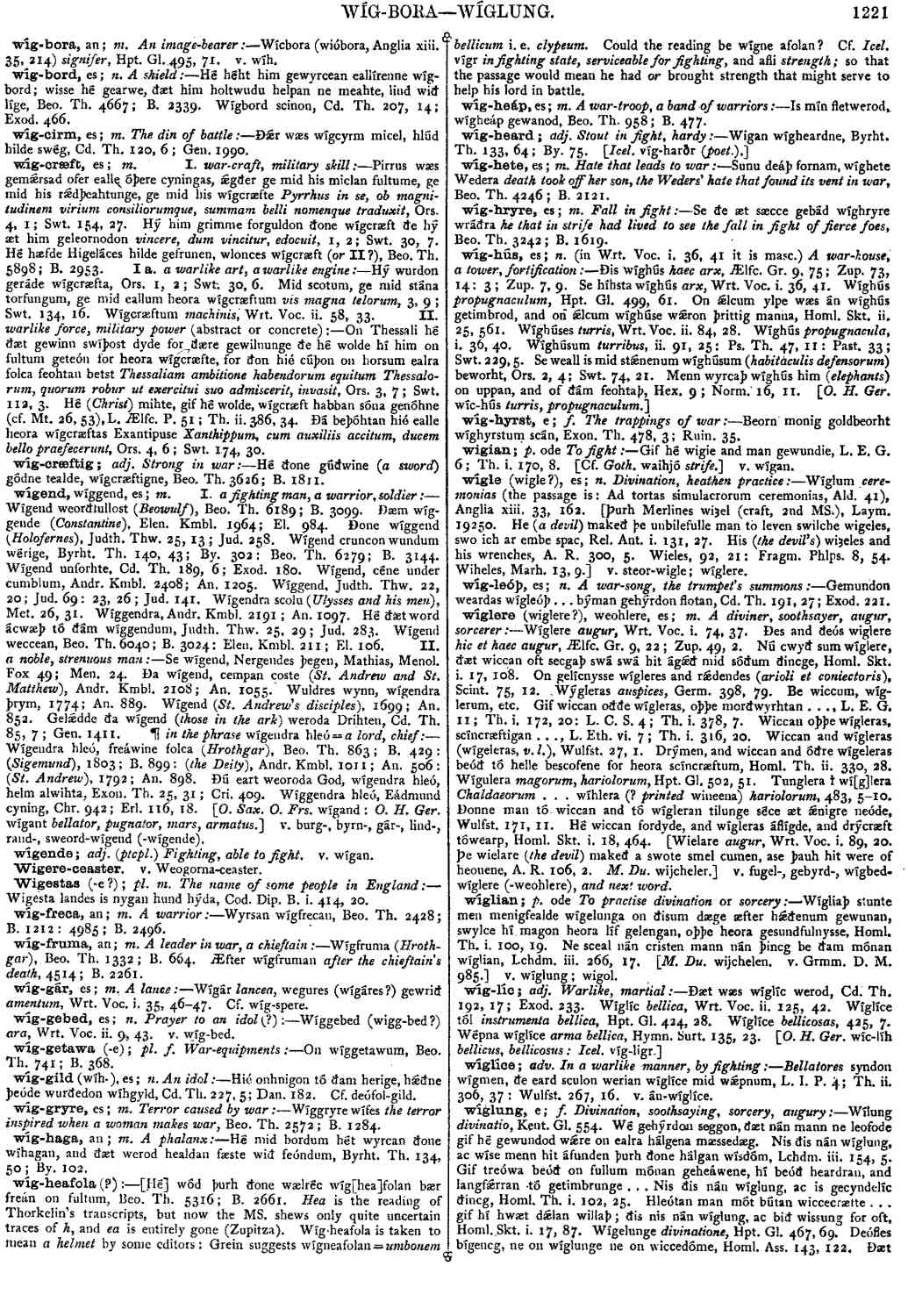wíg-heafola
- [Hé] wód þurh ðone wælréc wíg[hea]folan bær freán on fultum. Beo. Th. 5316; B. 2661. Hea is the reading of Thorkelin's transcripts, but now the MS. shews only quite uncertain traces of h, and ea is entirely gone (Zupitza). Wíg-heafola is taken to mean a helmet by some editors: Grein suggests wígneafolan = umbonem bellicum i. e. clypeum. Could the reading be wígneafolan ? Cf. Icel vígr in fighting state, serviceable for fighting, and afli strength; so that the passage would mean he had or brought strength that might serve to help his lord in battle.
Bosworth, Joseph. “wíg-heafola.” In An Anglo-Saxon Dictionary Online, edited by Thomas Northcote Toller, Christ Sean, and Ondřej Tichy. Prague: Faculty of Arts, Charles University, 2014. https://bosworthtoller.com/35662.
Checked: 0